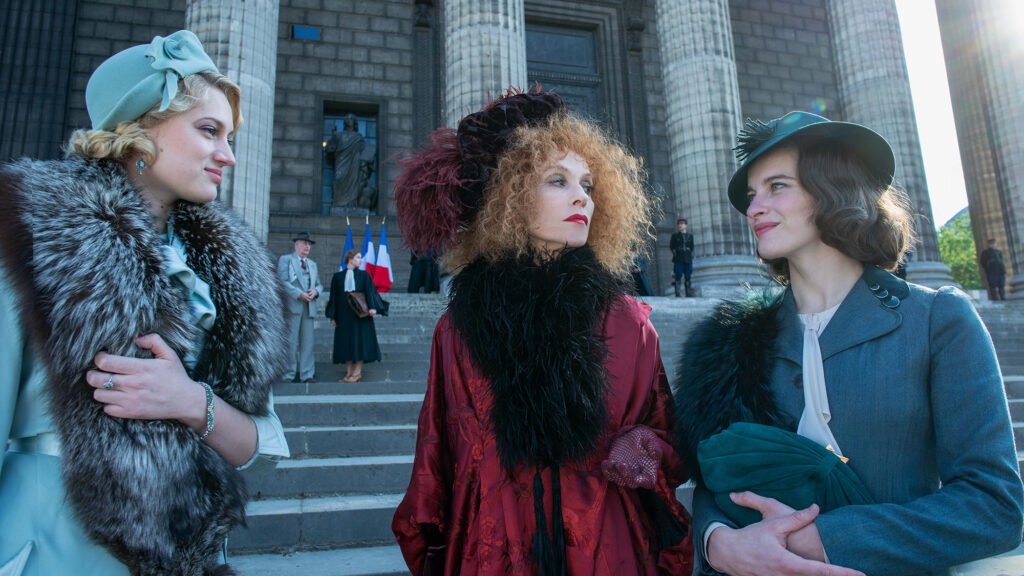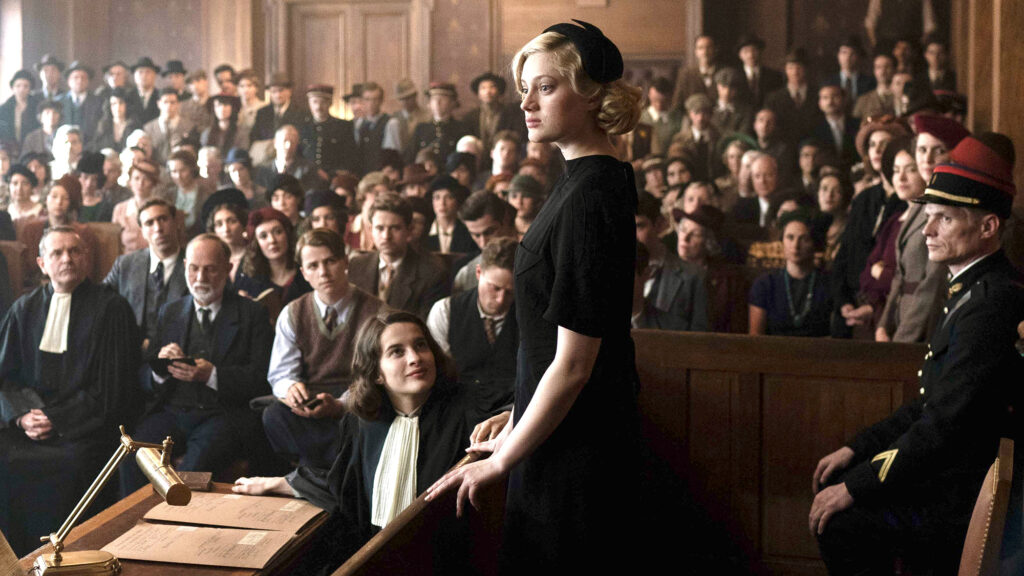Francois Ozon’s latest feature film is a fun French feminist trip
The Crime is Mine, François Ozon’s latest meticulous screwball comedy, is a witty showbiz caper with a feminist edge set in 1930s Paris.
Starring Nadia Tereszkiewicz, Rebecca Marder and the legendary French icon Isabelle Huppert, this film is, quite simply, a delight from start to finish. The two gorgeous female leads and Huppert’s turn as an eccentric former silent screen star with Sapphic leanings are worth the price of admission. But there’s lots more to love about The Crime Is Mine.
If you know the work of Ozon you will remember the dazzling splash he made with erotic thriller Swimming Pool (2003) and then two female-driven farces: 8 Women (which also featured Huppert) and Potiche, with French cinema great Catherine Deneuve.
The Crime Is Mine is, similarly, a female-centered period piece in which struggling actress Madeleine (stunner Nadia Tereszkiewicz and César award winner for Most Promising Actress) and her best friend Pauline (Rebecca Marder, an equally appealing rising star), an unemployed lawyer, live together in a tiny apartment and owe beaucoups of back-rent to their odious landlord. Madeleine gets her hopes up that she will land a role that will rescue them financially when she is called to the home of a sleazy male producer for a ‘meeting’ only to be sexually harassed. He ends up shot dead. But did she do it?

Madeleine goes on trial for his murder in a courtroom riddled with sexism and nevertheless becomes tabloid famous in a way a role never could have achieved. Pauline serves as her defense attorney and the ensuing media circus provides a sly and irreverent nod towards the ongoing drama of #MeToo where trial occurs via media, with loads of misogynistic assumptions and precious little empathy. Here’s a gay man appraising the dynamic with a sense of humor and a love of female glamour, which he finesses so that the femmes end up on top. The relationship between the two young women seems ambiguous, with Pauline emerging as the queerer character in the end.
Rebecca Marder said: “My character starts out as Madeleine’s best friend, her shoulder to cry on, her confidante. She initially seems to be the stronger of the two, but behind her assertive personality, we come to realize that she is fragile, especially in matters of the heart. Madeleine and Pauline are solid BFFs. I imagined that Pauline felt a kind of symbiotic love for Madeleine, a hybrid of romantic love and admiration. The film only suggests this; nothing is explicit. And that’s what makes Pauline both powerful and relatable. We pick up on her feelings, and can interpret them any way we like. … Their relationship is itself a story about the status of women, the pressure on women, and the revolution
they’re initiating, far from the catty clichés that would have them devouring each other.”

Adapted from a 1934 hit play by Georges Berr and Louis Verneuil, Ozon has fun with the narrative, exploring themes dear to him and relishing cinematic narrative tropes and the opportunity they sometimes provide for transformation.
“Talking pictures have always struck me as the art of lying par excellence, and I’ve wanted to tell the story of a fake offender for as long as I can remember. When I discovered the [play], I knew I’d found the perfect opportunity to tackle this theme,” Ozon revealed in press notes. “I retained the historical and political context of the 1930s but freely adapted the plot to resonate with contemporary concerns around power and control in gender politics. And I played with the parallels between theater and the justice system. In these times of collective depression, I felt a need for whimsy and lightness to combat the harsh realities of the present. So I leaned into the spirit of screwball comedy, with its rapid-fire dialogue and use of zany, unexpected dramatic situations to challenge its protagonists.”
Ozon intended “a tender, ironic farce,” and for the most part he succeeds. Along with the glamour are typically French themes such as the problem with labour and the value of work in general when presided over by bosses of all kinds.

Nadia Tereszkiewicz noted: “Madeleine is opportunistic and attention-seeking, but she also comes to realize that she may be able to help advance the status of women. First with a certain innocence, and then with conviction, she becomes a modern spokeswoman confronting a patriarchal society where women do not yet have the right to vote or even to have their own checking account.”
The Crime is Mine is visually stunning with authentic 1930s fashions and exquisite Art Deco-inspired set design by Academy Award nominated Jean Rabasse, costumes and cinematography by long time Ozon collaborators Pascaline Chavanne and Manu Dacosse.
The Crime is Mine opens in New York, Los Angeles and Chicago on December 25 followed by a national expansion.






